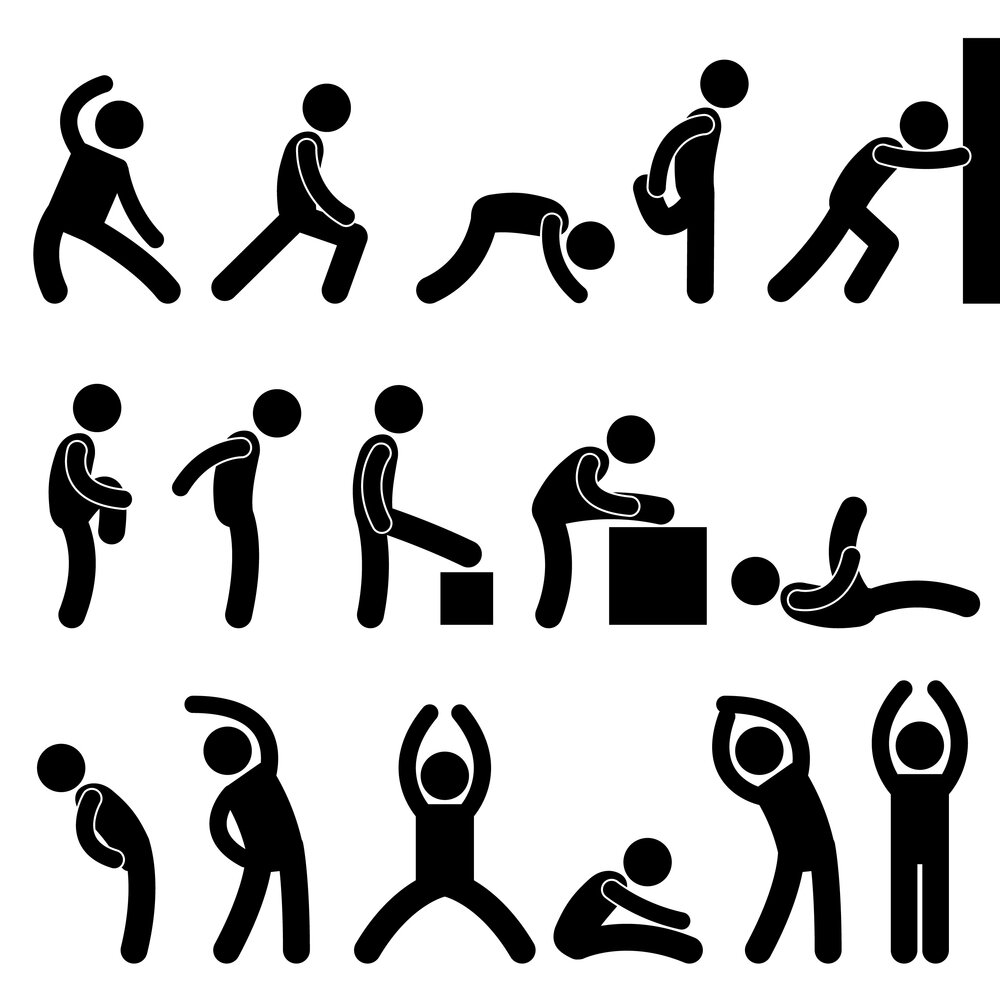
Most people know that exercising is good for your health, but it is also important to be mindful of how you exercise. Understanding and utilizing optimal mechanics, movement patterns, and the appropriate level of intensity when exercising is crucial in minimizing your risk for injuries and reaping the full benefits of your workouts. As a physical therapist, I treat a lot of patients with all sorts of aches, pains, and injuries, some of which might be limiting their exercise routines or even sidelining them completely. While one of my main objectives as a physical therapist is to treat injuries, I also want to help people understand how to move well, so they can minimize their risk of injury in the first place.
Whether you have been exercising all your life or you’re a beginner, read the following list of common mistakes that are made when working out and keep yourself safe!
6 Common Mistakes People Make When Exercising
1.) Exercising without Warming Up Properly
Warming up before exercising is very important. Warming up before your work-out increases heart rate and circulation, mobilizes the joint, increases blood flow to the muscles, and prepares your body for loaded movements. I know it’s tempting to skip the warm-up and save time, but increasing speed or intensity before your body is warmed up can quickly lead to injury.
2.) Increasing Intensity Too Much / Too Fast
From one work-out session to the next, dramatically increasing the amount of miles you run, the speed of which you run / exercise, or the volume of weights you’re lifting can lead to both pain and injury. Think about exercise the way you would think about dosing a medication for pain relief, lowering blood pressure or cholesterol, or even fighting an infection. If the dose is too low, you may not see a change in your symptoms (i.e. pain, blood pressure, or symptoms of the sinus infection). If the dose is inappropriately high, you may see relief in pain but with associated lethargy, nausea, vomiting, etc. But, if you take just the right dose, the medication is doing exactly what it is meant to do. It is the same with exercise. Too little movement may not provide us with much benefit at all, but too much, too fast, could leave us back at square one in our fitness journey.
3.) Not Stretching / Mobilizing
“Stretching keeps the muscles flexible, strong, and healthy, and we need that flexibility to maintain a range of motion in the joints. Without it, the muscles shorten and become tight. Then, when you call on the muscles for activity, they are weak and unable to extend all the way.” (source)
4.) Putting too Much Emphasis on “How Much” and “How Many Reps” Instead of Quality of Movement
I love a good HIIT class, or bootcamp, and they can be an excellent way to get yourself moving and get your heart rate pumping, but group fitness classes are also a place where quantity often takes precedence over quality, and “no pain no gain” is a popular mentality. The problem with quantity over quality is that your movements are predominantly momentum based, with no emphasis on the mechanics of movement. In order to keep up with the pace of the class, we rely abundantly on quick compensatory strategies (like sticking your hands under your butt when you’re performing flutter kicks). This can easily lead to pain and pressures in areas that are taking the brunt of forces, and overall breakdown of the joints and muscles. Learning the foundations of movement and implementing them in your workouts can help alleviate aches and pains and minimize risk of injury.
5.) Exercising Too Soon After an Injury
If you’re recovering from an injury, you need to take it slow and gradually resume your regular activities such as working out. Just because the pain is gone, doesn’t mean the injury is fully healed. Jumping right back into your full exercise routine can re-aggravate pain or even cause further injury. The best way to determine if you’re ready for physical activity after an injury is to consult a physical therapist and come up with a program to transition you safely and effectively.
6.) Waiting “until it gets worse” to seek treatment for an injury or issue.
One common mistake a lot of people make when they have pain or a minor injury is to avoid exercising the injured area altogether. This combined with not seeking treatment often makes minor issues get worse over time. Make sure to see a physical therapist immediately after an injury, so you can address the problem immediately, start feeling better sooner and have guidance on when and how to return to your normal exercise routines.
Would you like to schedule an appointment?
If you’re experiencing any pain or discomfort during exercise, physical therapy may help. To schedule an appointment with an experienced physical therapist in Miami, Florida, you can contact me via phone at (305)-982-7595, via email at arienne@doctorarienne.com, or simply fill out an online form. To schedule an appointment, click here.
If you enjoyed this blog article or have a specific question about it, shoot me a comment below!
